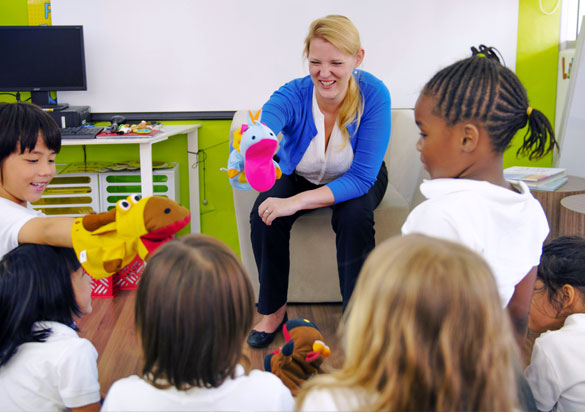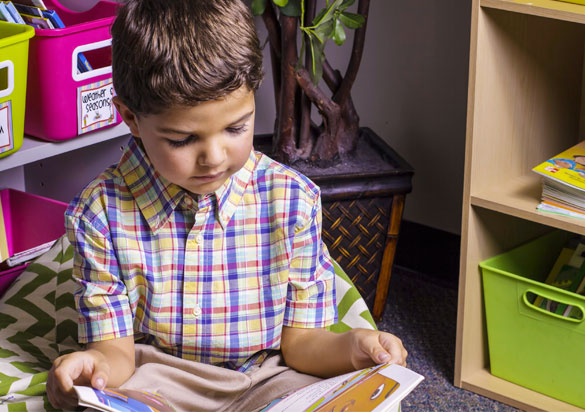

You can support students’ social-emotional, physical, and cognitive development by creating a Transitional Kindergarten (TK) classroom environment that is engaging, promotes movement, is responsive to the diverse backgrounds and experiences of your TK students, and is accessible to students with disabilities or special needs. Young learners need engagement in play-based projects that are connected to a theme-based integrated curriculum throughout the day. When carefully designed, the classroom environment can extend and reinforce the key curricular goals and concepts students are learning and support healthy brain development. The classroom space you create, individualized to the needs and experiences of your students, will be crucial in helping them get the most out of TK and thus the school years to come.
Every Transitional Kindergarten (TK) classroom area and center can include literacy opportunities for students.
Strategies can include:
Offering a wide variety of literacy-building materials allows students to manipulate and practice their literacy skills. Materials should be attractive, inviting, and relevant to a student’s interests and culture. Some suggestions are whiteboards, magnetic boards and letters, clipboards, felt boards with story scenes and characters reflective of multiple cultures, and letters and numbers in a variety of forms and textures. Other manipulatives might include:
The list is endless and can be developed throughout the year in conjunction with project-based learning!


Home language and English should be consistently, and distinctly, reflected in the classroom. For example, when modeling writing or labeling, purple can always be used to print in Spanish and orange for English. If the home language is spoken in the classroom by the teacher, it should be at consistent times. Avoid back-to-back translation, and instead, use gestures, photographs, realia, movement, and songs to convey meaning. Students using home languages should be warmly supported and gently scaffolded through song, storytelling, and other word exploration methods that encourage the practice of academic English.
Young learners need plenty of space and opportunity for cooperative learning experiences that support their social-emotional, linguistic, physical, and cognitive development, and also support their emerging cultural identities. These experiences help children process new information and enable them to make more substantive connections in their learning. The level of interaction provides children ample opportunity to speak with their peers and builds their language and speaking skills, which is particularly helpful for Dual Language Learners (DLLs).
It’s important to incorporate time into the daily routine for TK students to freely choose their learning experiences. Creating a welcoming environment that children can connect with makes for a more productive learning experience. Among the many strategies to accomplish this, a recommended approach is to have your classroom materials (including items from home or other “real-life” objects) and the overall learning environment reflect the diverse cultures and assets children bring from home. In addition, it can be helpful when areas are organized so students can readily access learning materials throughout the classroom, particularly for students with disabilities.
Labeling areas and materials in the environment will assist students with making choices and identifying how specific areas and objects are organized. In addition, the room should include quiet spaces that allow children to relax during stressful times. Resting places should be comfortable, welcoming, and infused with fabrics and textures familiar to children’s home lives.
Learning centers offer young learners the opportunity to engage in child-initiated learning and explore various interests when rotating through various centers. As you plan for integrated learning across all content areas in your classroom, you can consider the following characteristics and ideas for learning center themes:1
| 1 | California County Superintendents Educational Services Association (2011). Transitional Kindergarten Planning Guide: A Resource for Administrators of California Public School Districts. p. 59. |